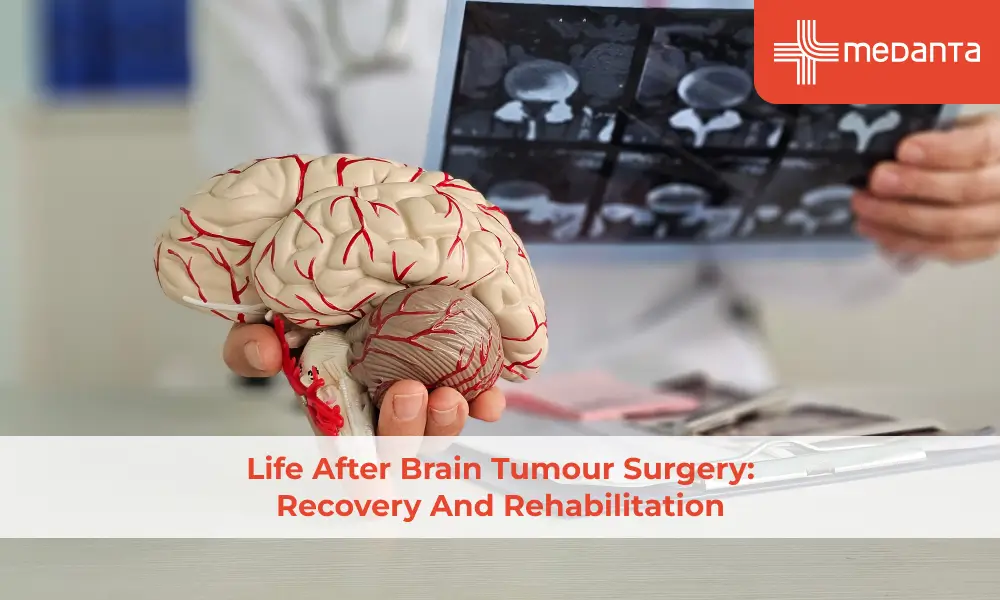Back Aches: An Overview

TABLE OF CONTENTS
Back pain is majorly an acquired disease related to lifestyle factors. Dr. Narang explains that while some spinal conditions are congenital, the majority of back pain cases are lifestyle diseases that develop due to poor sitting and working habits. This makes back pain primarily a lifestyle disease that people acquire through their daily activities and postures.
“Back initially about 5 to 7 years ago, we were seeing patients in the age of 35 to 50 years, but after the COVID incidence, the age has gone down, and we have started to see patients in the 20s,” notes Dr. Narang. This demographic shift highlights how working from home during the pandemic has significantly impacted spine health, particularly among younger adults.
Types of Back Pain
Dr. Narang classifies back pain in two primary ways:
Regional Classification
Back pain can be categorised based on the affected region:
Low back pain (lumbar region)
Mid-back pain (thoracic region)
Upper back or neck pain (cervical region)
Pain Pattern Classification
Back pain can also be classified based on how the pain manifests:
Axial Pain: This type of pain remains localised to the back itself and doesn’t spread to other areas.
Radiating Pain: This occurs when the pain extends beyond the back:
In lower back issues, pain may radiate down the leg (commonly known as sciatica)
In neck problems (axial neck pain)
Pain may radiate into the arms (radiculopathy)
Additionally, back pain may present as pain along the spine, by the side of the spine, or pain that radiates to the chest wall from the back.
Common Symptoms of Back Pain
Symptoms of back pain can vary widely among people. Dr. Narang mentions that back pain typically begins in one of several ways:
Pain that develops after work or physical exertion
Pain along the spine or by the side of the spine
Burning sensations
Pain radiating along one of the four limbs
Early morning stiffness
Understanding these symptoms is essential for proper diagnosis and treatment planning.
Diagnosis of Back Pain
The diagnostic process for back pain involves several steps:
Clinical Examination: The doctor first performs a thorough clinical examination to determine which area of the spine is affected.
Directed Investigations: Based on the clinical findings, specific diagnostic tests are ordered:
For lower back pain, an MRI of the lumbar spine is typically preferred
For neck pain, an MRI of the cervical spine is recommended
Doctors may perform X-rays alongside MRIs
In some cases (in elderlies), bone density tests may be required
These investigations help doctors make an accurate diagnosis and develop an appropriate treatment plan.
Treatment Options for Back Pain
Treatment approaches vary and depend on the specific condition and its severity:
Conservative Management
For first-time back pain that is axial (not radiating to limbs), conservative treatment is usually recommended, including:
Medications to relieve pain
Muscle relaxants
Physiotherapy
Exercise regimens
Lifestyle modifications
Interventional Procedures
When pain is severe but surgery isn’t necessary or desired, interventional procedures may be considered:
Root blocks
Epidural blocks
These procedures can temporarily relieve pain while the patient follows a rehabilitation plan
Surgical Interventions
Surgery may be necessary in certain cases:
Disc prolapse causing radiating pain
Presence of tumours
Other conditions that don’t respond to conservative treatment
The appropriate treatment approach is determined based on the specific diagnosis, the seriousness of symptoms, and the patient's preferences.
Preventive Measures and Ergonomics
Dr. Narang emphasises that prevention is key to avoiding back pain, particularly in our modern work environment. He provides several practical recommendations:
Proper Posture
“The precautions are very simple - one is the posture that is the most common cause,” states Dr. Narang. He advises:
Sit with your hips touching the back of the chair
Avoid reclining back without proper support
Maintain proper alignment while sitting
Workplace Ergonomics
With the increase in work-from-home arrangements, proper ergonomics has become even more important:
Use a desktop computer rather than a laptop when possible
Position your keyboard at elbow level
Keep your laptop screen at eye level to prevent neck flexion
Avoid working on laptops while sitting on beds, which forces the neck into a flexed position
Regular Exercise
Basic exercises, particularly those focusing on the neck and back, are essential for:
Relaxing tense muscles
Strengthening supporting muscles
Maintaining spinal health
Dr. Narang mentions that even the simple PT (physical training) exercises we did in childhood can be beneficial for maintaining back health.
The Impact of Modern Technology
Dr. Narang points out that our digital habits are contributing significantly to back problems:
Many people spend 1-2 hours on mobile devices after work
This typically involves keeping the neck flexed, adding strain to already stressed muscles
The combination of poor posture during work and additional screen time after hours compounds the problem
Conclusion
Back pain has become increasingly common, particularly since the COVID-19 pandemic led many to work from home under less-than-ideal ergonomic conditions. As Dr. Karanjit Singh Narang explains, while some back conditions are congenital, most back pain is a lifestyle disease that can be prevented through proper posture, ergonomics, and exercise.
By understanding the types of back pain, recognising symptoms early, seeking appropriate diagnosis, and following proper treatment plans, most individuals can manage and prevent back pain effectively. The key takeaway is that simple precautions in daily life, particularly related to posture and ergonomics, can make a noteworthy difference in preventing this increasingly common condition.






